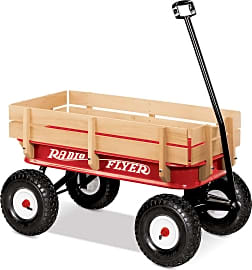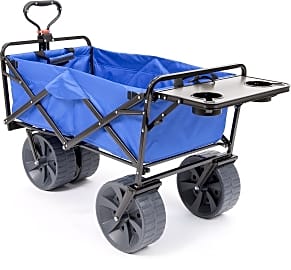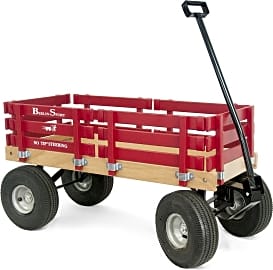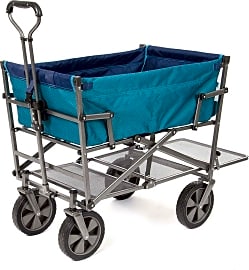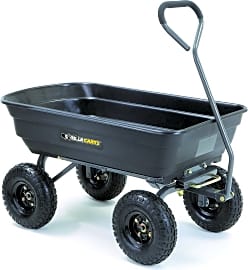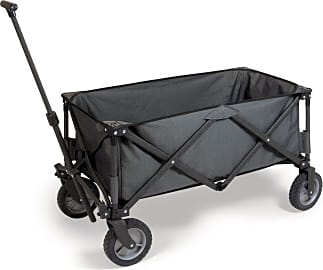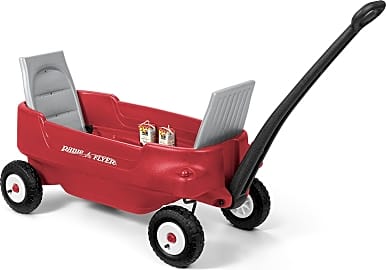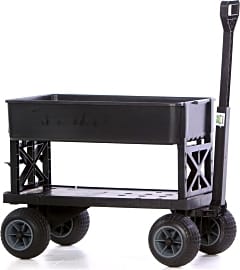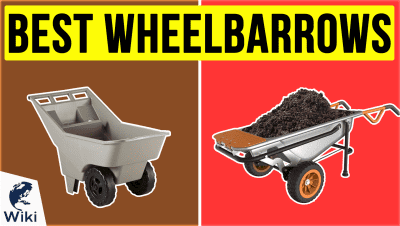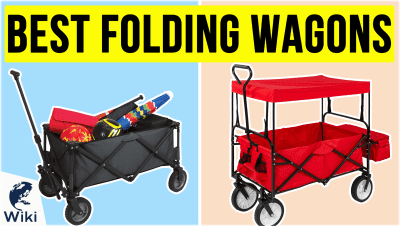The 10 Best All Terrain Wagons

This wiki has been updated 37 times since it was first published in July of 2015. Spending a day outdoors with the family can seem like a good idea — until you remember all of the stuff you need to take along. Fortunately, transporting essentials, or even kids, can be easy and convenient if you have an all-terrain wagon. Our selections will get you to your destination without leaving anything behind, be it the beach, the park, or a neighbor's backyard. When users buy our independently chosen editorial choices, we may earn commissions to help fund the Wiki.
Editor's Notes
December 18, 2019:
While analyzing our previous recommendations, we found that too many of our models were similar to one another. To remedy that, we decided to eliminate the EasyGo 2.0, Creative Outdoor, and Timber Ridge, all of which don't offer anything more than at least one of the other items on this list.
And of course, any time we remove items, we do our best to replace them with better options. One such example would be the Mac Sports Double Decker, which offers more cargo space than many others thanks to its smart design with a shelf below the main basket. The TCP Global Wide Wheel is another new addition that, while not the most heavy-duty option, can be just as easily pushed as pulled due to having a front and rear handle.
If you want something that is reminiscent of what you or your parents may have had as a child, you'll want to check out the Radio Flyer Steel & Wood 32Z and Berlin Flyer Sport F410. The latter is handmade by Amish craftsman, and both are designed with tip resistance in mind. While you could certainly give your kids a ride in either of these, a better option for that might be the Radio Flyer Luxe 3145, which has two padded seats and a canopy to protect them against harmful UV rays. Or perhaps the Radio Flyer Pathfinder, which also has two seats, though it lacks the plush comforts of the Luxe.
When it comes to backbreaking garden work, few are better than the Gorilla Carts GOR4PS. With its 600-pound capacity and tilt-to-dump feature, it can easily take the place of a wheelbarrow. That being said, if you don't need to lug such heavy stuff, the Mighty Max Plus One PO600C offers more versatility.
Special Honors
Overland Electric Garden Wagon If you'd prefer not to do any of the hard work yourself, you'll enjoy the Overland Electric Garden Wagon, though you will have to pay a pretty penny for it. It offers six cubic feet of cargo space, has a 24-inch wide hopper that can accommodate big items, and can safely carry up to 750 pounds. graniteind.com
Bannon Convertible Logging Wagon While you certainly won't be pulling it yourself, with the Bannon Convertible Logging Wagon you can transport up to 1,800 pounds of stuff. It offers a rugged, steel mesh construction and can be used as flatbed or with raised sides depending on your needs. northerntool.com
What Separates a Good All-Terrain Wagon From a Great One?
If you're interested in purchasing an all-terrain wagon, chances are you'll need something that won't rust, crack, splinter, or buckle.
If you're interested in purchasing an all-terrain wagon, chances are you'll need something that won't rust, crack, splinter, or buckle. In most cases, this means buying a wagon with either a steel frame or a polyester lining (perhaps even both). Traditional wood, metal, and nylon are all acceptable so long as your needs are met, but polyester and steel are more durable, and these materials are weather-resistant, as well.
Storage capacity is a major selling point for any all-terrain wagon. You should have some idea of how much cargo - in terms of size and weight - you'll need a wagon to hold. Any average all-terrain wagon should be able to handle somewhere between 100-200 lbs. Any heavy-duty wagon should be able to handle even more.
An all-terrain wagon's wheels should be designed out of either polyurethane or rubber, and they should feature some type of tread. Certain models feature small wheels in the front and large wheels in the back. This is optimal for steering a wagon around corners, but it may also cause the front wheels to jam or stall in the event they're being drug across loose sand.
Collapsible wagons are preferable to stationary models in that they can be folded down to fit inside any equipment closet or trunk. You can also remove the majority of collapsible wagons' liners, thereby enabling you to toss that liner into the wash (upon confirming that it is machine-washable, of course).
Several Little-Known Uses For an All-Terrain Wagon
Certain people can get use out of their all-terrain wagons on a day-to-day basis. For those who can't, there are still ways to have that wagon serve as a utility, especially if it just happens to be taking up space.
If you own a dog, you can convert any wagon into a doggy bed, a toy chest, or a transport to the park.
If you coach a sports team, for example, you can use an all-terrain wagon to transport equipment from the locker room to the field. If you're a teacher, you can use an all-terrain wagon for outdoor projects, or picnics. If you're a fisherman, you can use an all-terrain wagon to carry bait, and tackle, and rods. If you live on a farm, you can use an all-terrain wagon for carting items between the main house and a nearby barn, or a garage.
If you're in the midst of a home-improvement project, you can use a wagon to hold your power tools, your paint, your carpentry supplies, and more. At the end of every night, all you need to do is place all of your items back in the wagon, then wheel that wagon off to one corner.
If you have children, you may want to purchase a wagon specifically for storing toys. Whenever your child is done playing, you can simply wheel the wagon over as a reminder to clean up the floor. If you own a dog, you can convert any wagon into a doggy bed, a toy chest, or a transport to the park. If you're into gardening, you can fill a wagon with potted plants, the lot of which you can occasionally move wherever you want.
A Brief History of The All-Terrain Wagon
The idea of a flat, four-wheeled manual transport has been around since the Ancient Aztecs. Much like the all-terrain wagons of today, these early transports were used for wheeling heavy loads from one area to another. Unlike today's wagons, these early transports were relegated almost entirely to manual labor. The idea of pulling a small child inside a wagon didn't come along until the beginning of the 20th Century.
Manufacturers were designing wagons to be more durable, and they were marketing these newer wagons to the beach crowd, the gardening crowd, the construction crowd, and more.
Much of this transition was due to an Italian-American man named Antonio Pasin. Pasin, who named his first wagon The Liberty Coaster in honor of The Statue of Liberty, turned toy wagons into an industry throughout the Great Depression. This was due, in large part, to Pasin designing an entire line of shiny-looking wagons which he called his Radio Flyers. Radio Flyers became so popular that distributors could barely keep them on the shelves.
The popularity of Pasin's Radio Flyer led to hardware companies including Northern Tool, Lowe's, and Tractor Supply creating wagons of their own. These newer wagons were no longer resigned to functioning as children's toys. Manufacturers were designing wagons to be more durable, and they were marketing these newer wagons to the beach crowd, the gardening crowd, the construction crowd, and more.
Today, wagons continue to be used as everything from dog strollers to multi-purpose dollies. A lot of modern-day wagons have been uniquely designed, which may make shopping for an appropriate model more tedious, while choosing - and using - the correct model may prove more rewarding, as well.


